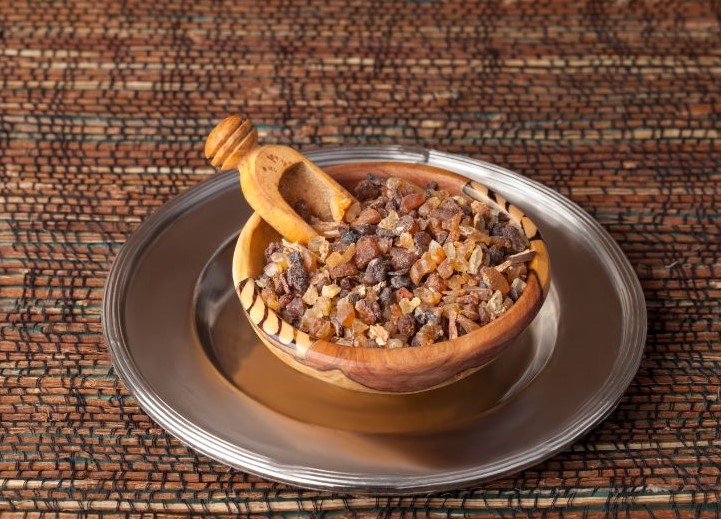- Sponsored Content
In the ancient world, misconceptions about toothpaste and oral care abounded, with people attributing cavities to mythical “tooth worms.” However, modern science has unveiled the true culprit behind dental decay: bacteria and plaque. This article explores the evolution of toothpaste, from ancient dental creams to today’s fluoride formulations, revealing intriguing insights into its history and usage.

Ancient Origins of Toothpaste
The journey of toothpaste dates back to around 5000 B.C., when Egyptians concocted a dental cream using powdered oxen hooves, myrrh, burned eggshells, and water. But since there were no toothbrushes at that time, they used chew sticks to put on this dental cream.
Later, Persians added ashes from burnt shells of snails and oysters along with gypsum to improve the recipe for the toothpaste. Ancient Greeks and Romans are also known to have used toothpastes and used flavours for bad breath, apart from charcoal and bark.
People in China and India are believed to have first used toothpaste around 500 B.C. It is not known whether these early tooth pastes were used alone or were used with rags, or with early tooth brushes such as neem tree twigs or miswak. These twigs have been used by Indians from ancient times, with neem twigs believed to have good mechanical effects.

The Emergence of Modern Toothpaste
The earliest known modern toothpaste formula was discovered in Vienna, Austria, predating commercial brands by over a millennium. Though Egyptians did made some sort of paste using ashes around 5000 B.C., some believe that the world’s oldest- known toothpaste formula originated around 1,500 years before Colgate began marketing its first commercial brand in 1873. This was discovered on a piece of dusty papyrus in a museum in Vienna.
This Egyptian engraved formula written in faded black ink made of soot and gum Arabic mixed with water described it as ‘powder for white and perfect teeth, and when mixed with saliva in the mouth, would form a ‘ clean toothpaste’; highlighting the earliest recorded use of toothpaste.
The Role of Fluoride
Fluoridation is the real reason why we use toothpastes. In 1914, fluoride was introduced to toothpaste, revolutionizing dental hygiene. The role of toothpaste has since diversified, but no matter what your individual needs are (i.e., tartar control, whitening, breath-freshening, a broken tooth and so on), dental hygienists agree that fluoride is a must.
According to the Academy of General Dentistry, brushing with fluoride toothpaste twice daily can reduce tooth decay by as much as 40 percent. “Even in areas where there is water fluoridation, the added fluoride in toothpaste has been shown to be very beneficial,” says Caryn Loftis-Solie, RDH, president of the American Dental Hygiene Association (ADHA).
Today, fluoride remains a cornerstone ingredient, essential for preventing tooth decay and maintaining oral health.

Dispelling Toothpaste Myths
Less is more. Contrary to popular belief, a full brush of toothpaste isn’t necessary for effective cleaning. Dental experts recommend using less toothpaste to achieve the same results while prolonging the tube’s lifespan.
Importance of Proper Brushing
How you brush is more important than what you brush with.You can buy the best toothpaste and toothbrush on the market, but if you aren’t brushing correctly, you won’t see results. Here at Pure NZ Dental, we recommend doing it properly by positioning the brush at a 45-degree angle and employing gentle circular motions to ensure thorough cleaning and plaque removal. Brushing two times for at least two minutes each time is the first step in keeping your teeth and gums healthy.

Organic toothpastes as effective as regular ones
If you’re willing to spend a little more to go green, natural and organic toothpastes can be a good eco-friendly alternative to commercial brands—provided they contain fluoride. “Natural and organic toothpastes that include fluoride in their ingredients are as effective as regular toothpastes with fluoride,” advises Dr Justin. You’ll also be avoiding artificial preservatives, sweeteners, and dyes.
Conclusion
From ancient dental creams to modern fluoride formulations, toothpaste has undergone a remarkable evolution. By understanding its history and utilizing proper brushing techniques, individuals can optimize their oral care routines for healthier teeth and gums. So next time you reach for your toothpaste, remember the journey it’s taken through millennia of dental history.
P.S. Did you know? Toothpaste will protect your teeth better if you do not rinse after brushing. Simply spit out any extra foam and you’re good to go!
At Pure NZ Dental, our friendly and highly professional team are passionate about providing you with the dental care that you deserve!
Have a question or a concern? Contact us at +65 64630257 or via email at info@purenzdental.com
+65 96798770
@purenzdental
purenzdental.com








